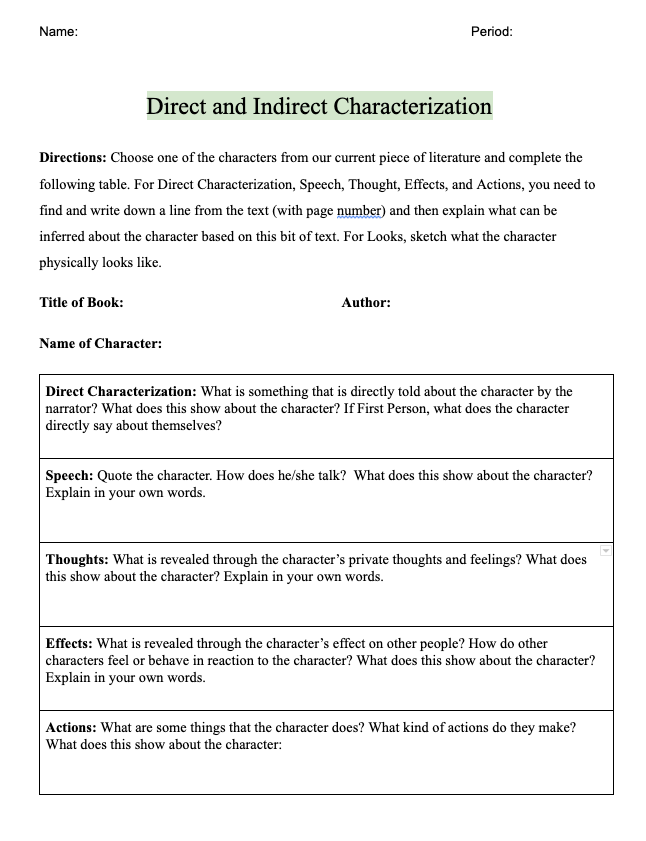What is Direct Characterization?
Direct Characterization tells the audience what the personality of the character is.
Example: “The patient boy and quiet girl were both well mannered and did not disobey their mother.”
Explanation: The author is directly telling the audience the personality of these two children. The boy is “patient” and the girl is “quiet.”
What is Indirect Characterization
Indirect Characterization shows things that reveal the personality of a character.
There are five different methods of indirect characterization:
Speech
What does the character say? How does the character speak?
Thoughts
What is revealed through the character’s private thoughts and feelings?
effects
The effects the character has on other characters. What is revealed through the character’s effect on other people? How do other characters feel or behave in reaction to the character?
actions
What does the character do? How does the character behave?
looks
What does the character look like? How does the character dress?
Directions
Choose one of the characters from our current piece of literature and complete the worksheet below.
Requirements
- For Direct Characterization, Speech, Thought, Effects, and Actions, you need to find and write down a line from the text (with page number) and then explain what can be inferred about the character based on this bit of text.
- For Looks, sketch what the character physically looks like.

